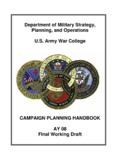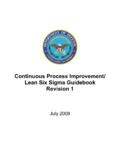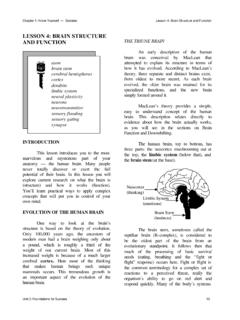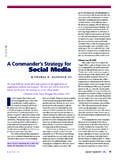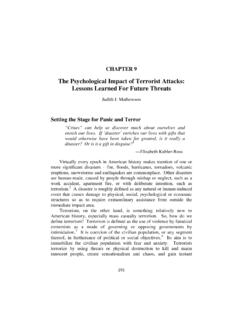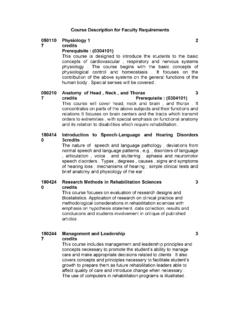Transcription of Chapter 13. Organizational Communication1
1 Ch 13 Organizational Communication Chapter 13. Organizational Communication1 By Kathryn A. Baker Managers have traditionally spent the majority of their time communicating in one form or another (meetings, face-to-face discussions, memos, letters, e-mails, reports, etc.). Today, however, more and more employees find that an important part of their work is communication, especially now that service workers outnumber production workers and research as well as production processes emphasize greater collaboration and teamwork among workers in different functional groups.
2 Moreover, a sea-change in communication technologies has contributed to the transformation of both work and Organizational structure. For these reasons, communication practices and technologies have become more important in all organizations, but they are perhaps most important in knowledge-intensive organizations and sectors and, as such, are of great significance to science organizations and to public science management. The study of Organizational communication is not new, but it has only recently achieved some degree of recognition as a field of academic study. It has largely grown in response to the needs and concerns of business.
3 The first communication programs were typically located in speech departments, but most business schools now include Organizational communication as a key element of study. The study of Organizational communication recognizes that communication in organizations goes far beyond training managers to be effective speakers and to have good interpersonal communication skills. Moreover, it recognizes that all organizations, not just business organizations, have communication needs and challenges. The field of Organizational communication is highly diverse and fragmented, as evidenced by results of literature searches on the topic, textbooks in the area, and the Harvard Business review s (1993) compilation of its communication articles, The Articulate Executive.
4 It spans communication at the micro, meso, and macro levels; formal and informal communications; and internal Organizational communication practices (newsletters, presentations, strategic communications, work direction, performance reviews, meetings) as well as externally directed communications (public, media, inter- Organizational ). Innovation, Organizational learning, knowledge management, conflict management, diversity, and communication technologies are also addressed. As a new academic discipline, Organizational communication is struggling to develop and convey some sense of coherency across these many areas.
5 In addition to its fragmented nature, Organizational communication, perhaps more than any other aspect of Organizational theory and practice, has been subject to dramatic change. Before 1920, communication in small organizations was largely informal. As organizations increased in size, formal top-down communication became the main concern of Organizational managers. Organizational communication in today s organizations has not only become far more complex and varied but more important to overall Organizational functioning and success. While research used to focus on understanding how Organizational communication varied by Organizational type and structure, the emphasis has increasingly turned to understanding how new communication technologies and capabilities can help bring about new and more effective Organizational forms and processes (Tucker et al.)
6 1996; Desanctis and Fulk 1999). 1 Related chapters include: Change Management; Knowledge Management; Leadership; Organizational Culture; Innovation. Ch 13 Organizational Communication 2 This review summarizes the historical trends and the increasing importance of Organizational communication, the basic theoretical perspectives that guide the study of communication and the key distinctions that guide the study of Organizational communication, the key functions of communication in organizations.
7 And implications of communication technologies for organizations. Because Organizational communication has become such a big topic, this review is limited to addressing internal Organizational communication. Interactions with external stakeholders and communication of scientific information to external audiences are addressed in separate chapters (see Chapter 10. Participative Management and Chapter 17. Communicating Science ). Historical Trends and the Increasing Importance of Organizational Communication Views of Organizational communication can be categorized as those that view Organizational communication as one aspect of an organization versus those that see it as the underlying basis of the organization itself.
8 An example of the former is exemplified by Drenth et al. (1998), who define communication as the sending and receiving of messages by means of symbols and see Organizational communication as a key element of Organizational climate. The latter viewpoint is reflected by Myers and Myers (1982:xv) who define Organizational communication as the central binding force that permits coordination among people and thus allows for organized behavior, and Rogers and Rogers (1976:3) who argue that the behavior of individuals in organizations is best understood from a communication point of view.
9 In many ways, organizations have evolved in directions that make the latter view more appropriate. Changes confronting organizations and the associated changes in Organizational forms have made Organizational communication increasingly important to overall Organizational functioning. For example: Work is more complex and requires greater coordination and interaction among workers The pace of work is faster Workers are more distributed Simultaneous, distributed work processes are more common Knowledge and innovation are more critical to an organization s competitive advantage Communication technologies and networks are increasingly essential to an organization s structure and strategy.
10 Communication is not only an essential aspect of these recent Organizational changes, but effective communication can be seen as the foundation of modern organizations (Grenier and Metes 1992; D Aprix 1996; Witherspoon 1997; von Krogh et al. 2000). Ch 13 Organizational Communication 3 Theoretical Perspectives Three theoretical perspectives guide the study of communication: the technical, the contextual, and the negotiated perspectives.
